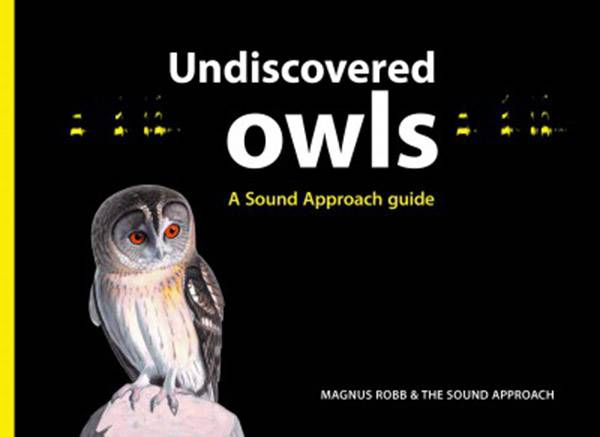Hardback. 335pp. Sample prices UK sellers:
NHBS £29.99 + £2.99 p&p = £32.98 UK, £35.99/€35 + €7 (approx) Europe.
WildSounds £34.99 postage included UK: for Europe, postal surcharge calculated by weight.
Let’s cut to the chase. There are no pictures between the covers – this book contains data, the condensed relevant information that comprises the first comprehensive 21st-century checklist covering an updated and well-rationalised definition of the Western Palearctic bird checklist. Superficially, this is a book for data junkies who like birds, and yes, doubtless they will appreciate it for that reason. However, it is far more than that, for not only does this book deserve to sit on academics’ shelves, for once it has been examined closely, it also will appeal to those who are hooked on the way science uncovers mysteries and the way it often producing counter-intuitive results that disturb comfortable, long-held assumptions. In short, beneath the neatly-summarised species accounts lie countless detective stories that have connected the clues and brought together hosts of disparate facts.
Bird taxonomy has as its fundamental purpose the better understanding of the biological relationships between bird populations. That simple quest is beset by complexities. For all practical purposes, bird species and subspecies accord neatly with their definitions as such probably about 90% of the time. The remaining 10% are subject to debate, sometimes civilised, sometimes heated and sometimes with great vituperation. Since a bird’s evolution does not necessarily progress at the same rate as their nearest relative, as birds of the same genus, size, or family, this presents an immediate set of classification problem relative to those congeners Even if a population’s ecological niche has experienced the same advance and retreat of glaciations as its congeners, inconvenient differences emerge. Larger birds live longer and experience fewer generations over any period and so tend to evolve more slowly. In short, this is why there are competing taxonomic concepts, and why none of these can cope with describing the status of every bird taxon.
The flagship of the Lynx Edicions ‘fleet’ of books is Hand Book of Birds of the World (HBW), which very sensibly has developed into HBW (Alive), an on-line resource that is invaluable. It shares with BirdLife International its adoption of the Tobias et al 2010 taxonomic approach, which is proving of great help in concentrating conservation efforts on threatened species. Nonetheless, that system is, in the opinion of molecular biology researchers, less well suited to their data-driven worldview, albeit one that is subject to interpretation of hugely complex processes. Consequently, it is a welcome and encouraging move that Lynx Edicions have supported the use in this book of the International Ornithological Congress (IOC) taxonomic approach.
The author, for sound, practical reasons, defines the Western Palearctic more broadly than earlier authors. Let’s start with counter-clockwise with the inclusion of the Arabian Peninsula and Iran – that has ensured that the geography of the Middle East and across the Gulf to Iran occupies a larger proportion of the WP than before, a matter of great interest to the OSME Region. Also included is the area to the west of a median line north through the Caspian, then following the meandering Ural River north and east to Zlatoust, Chelyabinsk Oblast.
Westernmost Kazakhstan is therefore included in the WP, but I should point out two minor but unhelpful errors relating to the map and to the extent of the WP as described under the heading of Regional Boundaries.
First, the scale of the map in the book is adequate enough to depict the large meanders of the Ural River, but instead it simply indicates a straight line to a point at the southern end of the Urals. The map therefore overemphasises the area of Kazakhstan allotted to the WP
Second, the WP boundary description mentions an arbitrary point 50km east of Yekaterinburg, which, when I plotted it, makes a dogleg east of that city and would include it in the WP. I doubt if this be the case, for if we take instead an arbitrary point 50km west of Yekaterinburg (Point X for convenience), then the author’s two arbitrary straight lines, Zlatoust to Point X and Point X to 58°30’N, match neatly without a dogleg, as depicted on the map. (58°30’N is the author’s arbitrary point on the Oblast border between Perm and Sverdlovsk at the southern end of the Ural Range.) I estimate that adoption of ‘Point X’ best approximates a sensible arbitrary choice of boundary.
The WP boundary follows Oblast borders north to the Kara Sea along the 60°E, doglegging E to 70°N to include Novaya Zemlya. At 82°N, it turns west to 10°W, south almost to the Arctic circle to a latitude that corresponds to 12 miles north of the northern tip of Grimsey Island at 66.67°N (The furthest north part of Iceland’s territorial waters.). It then heads west to 30°W and south to 14°N, but takes in a small westward enclave to include all Azores Archipelago islands. The boundary runs east to 20°W and north to 19°N, thus accommodating the islands of Cabo Verde, and east to the Mauritanian coast, following it north to 20°N before heading east as far as Chad. Here there is a large southern enclave to 16°N to include the Tibesti Massif, then at 20°E it returns to20°N, then east to the eastern Libyan border with Sudan, heading north up that longitude until it reaches the southwest corner of Egypt. Here it follows the southern Egyptian border with Sudan until it reaches the Halaib Triangle, part of Egypt but administered by Sudan. Unlike the OSME Region, the WP boundary skirts this area before heading east to the median point of the Red Sea and following it south through the Bab al Mandab Straits before roughly paralleling the Arabian coast to reach the Iran- Pakistan coastal border. Masirah Island is included, but the Socotra Archipelgo is not.
I have spent some time on describing the WP area defined by the author to enable people to track this area on such as Google Maps because this surely is a WP concept that will endure. I should also help OSME members visualise how much overlap there is between the two Regions.
The book’s title will surely be abbreviated quickly to BENAME! Its checklist comprises 1148 extant species up to the end of 2015. The OSME Region List (ORL) latest draft to date comprises 1158 taxa and so there is much overlap, but individual comparison is made straightforward because both are based on the IOC World List, and although one is hard copy and the other on-line, any contradictions can be audited via the archives at www.worldbirdnames.org, whose updates (four per year) can be referenced quickly. Thus, this book will be particularly useful for nationals of many countries in the OSME Region, particularly where their national lists follow the ORL (or IOC directly), as a benchmark.
The species accounts follow a standardised layout, are packed with detail checked with meticulous care (I have checked through a fairly extensive sample and found little to quibble about), yet the texts are of a consistent and easily-absorbed style despite the constraints of space that might otherwise have made it a mind-numbing task for the reader. The accounts include scientific and English names, departing from IOC orthodoxy on occasion but with adequate reasoned explanation; other common species or subspecies English names; a brief summary or pertinent taxonomic points; a broad view of species distribution, but ending with vagrancy records by country or region. Deliberate or accidental introductions, where breeding is, or has been successful, are well-covered.
Following the species accounts are useful, informative Appendices: the first lists endemic species, the second contains two extinct species, the third the omitted species, with brief explanations for their omission and the fourth contains national list totals of species recorded. All the Appendices should spark a little debate, but also will be useful for keen quizzers! What should be useful for WP listers is the 33-page ticklist. Now, making a photocopy, OCR copy or even smartphone copy for use in the field will be a cumbersome task, and so here I make a plea addressed directly to Lynx Edicions for an electronic version to be made available for free download, possibly as an updateable adjunct to the HBW Alive website as an alternative to Lynx Edicions/BirdLife WP List. Fanciful? Perhaps, but if you don’t ask nicely, you don’t get!
If you find a mistake or a misplaced emphasis, do what I’ve done – contact the author with your points, because that’s exactly what he asks you to do! Apart from my minor quibbles about the map, I found very little indeed that was in error, which, given the huge list of references of source data consulted by the author and his unenviable selection task, is quite remarkable. It does not matter that in some places where the OSME Region and the WP Region as here defined differ in what is omitted or included. Where there are differences, in both cases reasons are given, which means that you have a clear audit trail of the arguments. I’ve already found that the 32-page two-column list of References to be very useful for the ORL.
The 23-page, three-column Index of Species (English and scientific names alphabetically arranged) works well, but you need to know the modifier – in other words, ‘Golden Plover’ is not listed, but ‘European Golden Plover’ is.
It may be unusual to end a bird book review with a discussion of the Introductory Material, but in this case, it rounds out what’s gone before. The main part of the Contents section is the breakdown of the Systematic List into bird Families that quickly directs the reader to where he or she wants to go. Many books over-complicate this with too much detail, but not here. The Preface is concise, elegantly phrased and to my mind, deeply personal, which approach brings home Dominic Mitchell’s passion and dedication to birds and to everything to do with birds. I like that; I like it enormously. The Acknowledgements section takes the newbie and the old hand* perhaps unwittingly on a tour of major contributors to birding, to bird research, to the love of birds, to bird discoveries and to bird science. That’s why each species account will engender interest and excitement if you will let it do so – you need to absorb the context – that is what gives information and data meaning. That’s why I’ve always loved books that tell you more than the mere words in the text can convey.
Lastly, the two sections, About This Book and Introduction, are the nuts-and-bolts part. This is the part that provides the background which the species accounts will adorn. Once you’ve read them carefully, do it again. You will profit by doing so, because you will be able to appreciate the measure of this book. It’s an achievement of which I would have been proud, but Dominic has done it far better than I could have done.
Mike Blair
*Declaration of Interest here: I’m mentioned in the Acknowledgements…


